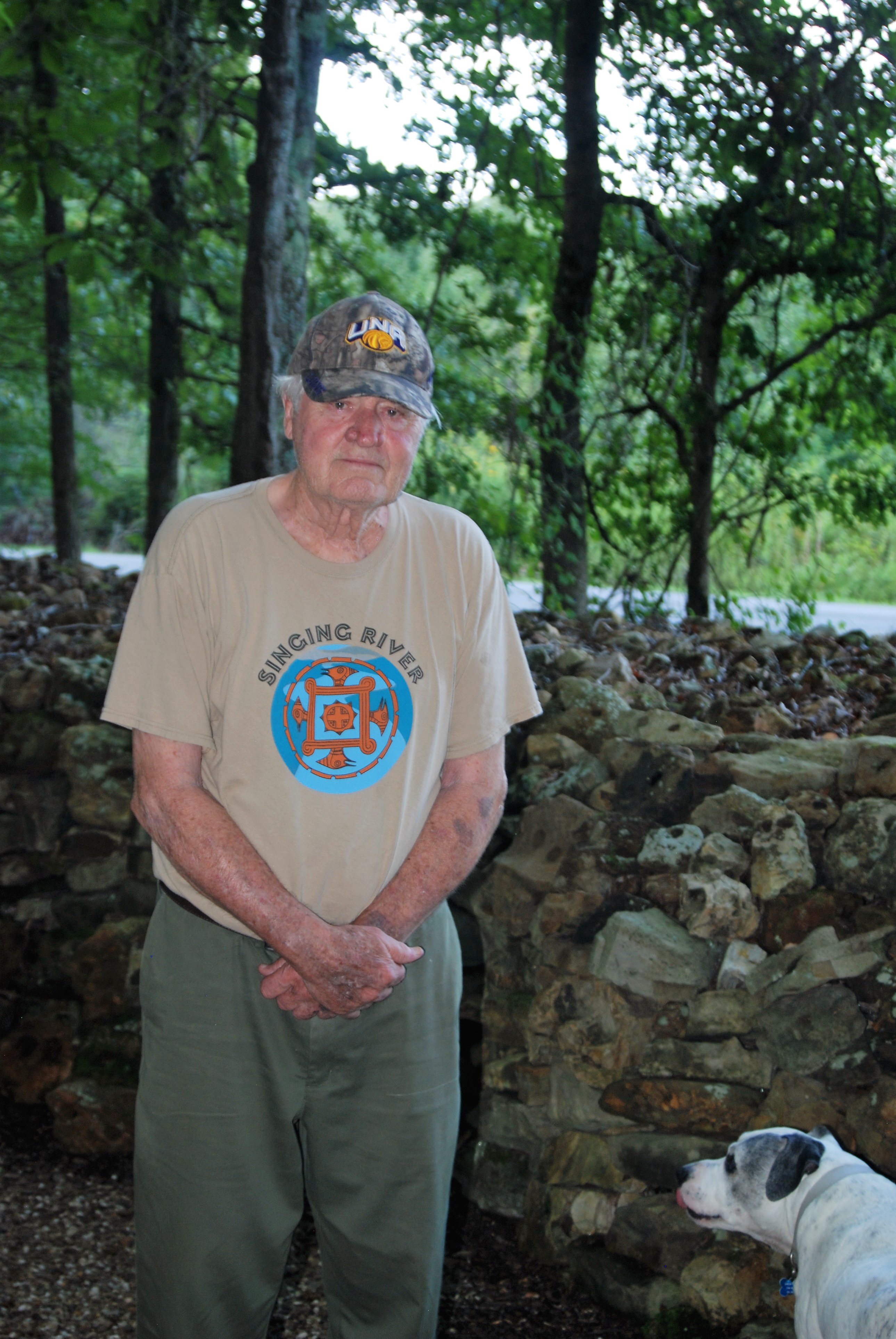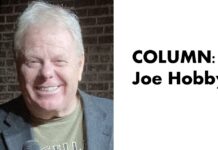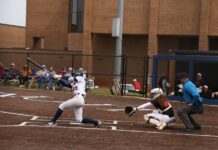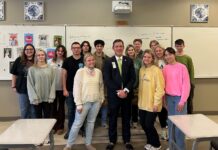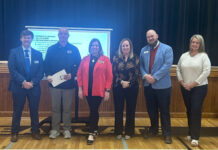Photo: Tom Hendrix
This group of Indians were walked from right here (Florence) to the Indian Nation, which is what we call Oklahoma today; around 850 miles from here.”Tom Hendrix
FLORENCE – Family stories have been handed down to the next generation for many, many years. Those stories are what keep a family’s history alive and going strong. They help us to know who our ancestors were and, sometimes, help us to understand why we are the way we are. It’s a connection that combines the past with today. The family historian keeps up with the old stories, photos and family information. Not everyone is as interested in such data, but there’s always that one person who seems to really connect with their family’s past each generation.
Meet Mr. Tom Hendrix from Florence, Alabama. Since his childhood, he has heard all sorts of family stories and as a result, he has strengthened a special bond with his ancestors, especially his great-great grandmother.
“In the early 1930s my grandmother wrapped me up in an old quilt one morning and started sharing beautiful stories with me,” he began “How Brother Rabbit Lost His Tail, Why Brother Turtle Smiles and How Sister Hummingbird Came to be. She captured this little boy’s imagination three quarters of a century ago and she’s had it ever since,” he smiled.
“As I got older, I asked my grandmother where the stories came from. She said they came from my great-great grandmother, who was an American Indian,” he paused just a moment. “She made an incredible journey when she was a young girl and was an absolute magician with medicine; herbal medicine. As time went on, my grandmother shared her story with me.”
Hendrix dragged up a couple chairs, took a seat and began to tell the most amazing story of his great-great grandmother. She was a Yuchi Indian named Te-lah-nay, which in her native language, means Woman with the Dancing Eyes. Before Te-lah-nay was 20 years old, she had done something that was unthinkable, especially for a young Indian girl. Hendrix was proud to tell us her story.
“In 1839 the militia here in Lauderdale County built a stockade about 15 miles east of us, right here in Florence. They started gathering up all the Indian tribes and taking them there. Well they found two young Indian girls hiding in an old abandoned house. They were taken to the stockade and put with the rest of the Indians.
“Well, the government officials did something a little different with this group; they hung metal tags around their necks. The tags were octagon shaped brass tags with a number on one side and ‘U.S.’ on the other. The two young girls were numbers 59 and 60. Number 59 was my great-great grandmother, number 60 was her sister,” he smiled proudly.
“This group of Indians were walked from right here (Florence) to the Indian Nation, which is what we call Oklahoma today; around 850 miles from here. They carried this bunch out there just like they did a lot of them, the Cherokee, Choctaw and the others. They placed those girls, numbers 59 and 60, with the Creek Indians in what is now present-day Muskogee, Oklahoma.”
While in Oklahoma, Te-lah-nay would say the rivers and streams were silent. Her people, the Yuchi, believed that in the Tennessee River there was a young woman who sang beautiful songs. They called it the Singing River. The river had special meaning to the girl and she would not be happy until she had returned to it.
“Number 59 spent a winter out there. One spring morning she slipped away and started home. It took her roughly five years to walk back. She came back all by herself. How do I know,” he asked? “Well, she brought her tag back with her! In later years, she would say, ‘We all thought the Shiny Buttons had changed our names (shiny buttons being the army folks with their brass buttons) so I thought I might need my name when I got back. I brought my name back with me.’”
Hendrix now has that old tag and considers it a treasure. When speaking of his great-great grandmother, Hendrix gets a twinkle in his eye and a smile across his face that shows just how proud he is of her. It is almost like he really does know her in a special, mysterious way.
“I told you she was a magician with medicines,” he beamed. “Are you familiar with the willow tree that grows around our creeks and riverbanks? Miss Mary (his great-great grandmother’s English name) would go down to the low places and find the willow tree and take some of the side bark and the roots then boil them together until it became a thick yellow tea. Drinking that tea would cure the big hurting of the head.
“Fifty years ago they got the main ingredient for aspirin from the bark of the willow tree, which you may already know, contains salicylic acid. That was 50 years ago; 160 years ago, my great-great grandmother was already curing people’s headaches with the same thing,” he grinned happily.
The more he learned of his great-great grandmother, the more he wanted to do something to honor her, but for some reason, he could not figure out what to do.
“Thirty-five years ago I got a telephone call from a woman out of Oklahoma. She was a person like my grandmother, a full-blooded Indian. She wanted to talk to me so I invited her to come for a visit. Her name was Minnie Long.”
“She spent three nights and three days with me. We sat here for three days and all of the sudden she looked at me and said, ‘Mr. Hendrix you have a problem.’ I said, ‘Yes Grandmother, I do have a problem. All my life I wanted to do something for my great-great grandmother, but I have no idea how to do it.’ She said, ‘Are you talking about a memorial type thing Mr. Hendrix?’ I said, ‘Yes ma’am.’
“Mr. Hendrix we shall all pass this Earth, only the stones will remain,” she said. “Honor your grandmother with stones. Build her two walls, one for her journey from where she left headed to the Indian Nation, and another wall for the journey from Muskogee, Oklahoma back home. Do not use mortar, no cement or anything foreign. You are to lay one stone at a time for each step she made.”
Tom lives 10 miles from the Tennessee River. He knew he could find all the rocks he would ever possibly need.
“Well, I swallowed about 25 times and finally I said, ‘Grandmother, I can do that.’ Then she left me with these beautiful, beautiful words; I will never forget them. She said, ‘If you will do that, Mr. Tom, I promise you will find your path in life. And then you may sing your song.’ Isn’t that beautiful? It still gets me today,” he began to tear up.
After he regained his composure, he pointed to the two walls on either side of him. After 35 years of work the walls are amazing.
“So as you sit here today there is over 8-and-a-half million pounds of stones here,” he smiled. “I picked them up, put them in my truck, then loaded them onto a wheelbarrow and then put them into the wall. So actually I picked up over 27 million pounds of stone. I’ve worn out three trucks, 22 wheelbarrows, 3,700 pairs of gloves, three dogs and one old man,” he chuckled.
Each wall contains a prayer circle that features four tiers that represent birth, life, death and rebirth. The walls are a mile-long holy place that winds through his property. They are recorded in the Library of Congress and range in height from 4 feet to almost 6 feet in some spots. They are the largest unmortared walls in the United States. People from all over the world come to visit the walls, bringing with them all kinds of special fossils and rock specimens.
In 2000, Hendrix published a book about his great-great grandmother’s journey. It is called “If the Legends Fade” and is in its 11th printing as of Nov. 2015. It is available for purchase by going to www.ifthelegendsfade.com or by visiting Hendrix at his home where the wall is located. His address is 13890 County Road 8, Florence, Alabama 35633, near the Natchez Trace and Highway 20/Savannah Highway. For more information, call 256-764-3617.
Copyright 2016 Humble Roots, LLC. All rights reserved.

